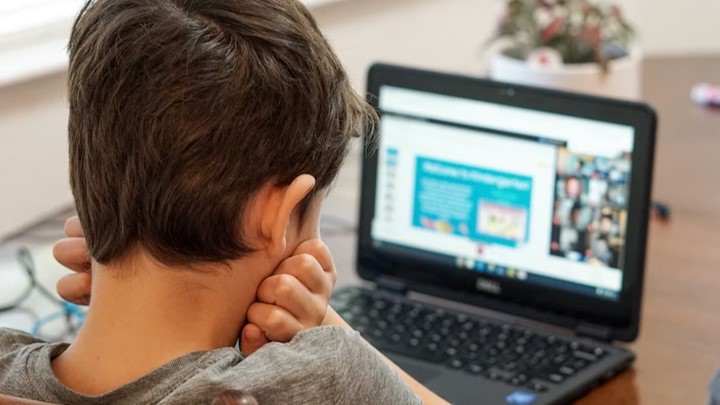Last Updated on April 22, 2023 by Uncle Pat Ugwu
The internet no doubt is a wonderful place for both kids and teens. Children can use internet space to learn, collaborate, play games and have fun. These good opportunities also come with benefits and risks. In this post, we shall share with you, child online safety and protection for teachers, parents, and other caregivers. You can download this post as an eBook for your ward here.
People who visit the internet are faced with different kinds of predators. An adult may have knowledge on how to be secure or have reduced risk online. But this may pose serious challenges to children. Over the years, many kids and teens have experienced cyberbullying, sexting, violent graphical content, privacy violation, and so on.
This can cause serious trauma in the life of a child. Teachers, parents, and other caregivers have one role or another to play in order to curtail this.
What is Child Protection?
According to Wikipedia, Child Online Protection is an initiative which is established by the International Telecommunication Union in November 2008 within the framework of the Global Cybersecurity Agenda. The initiative was supported by the United Nations Secretary-General, states, and several international organizations.
Every child must be protected from violence, exploitation and abuse on the internet. – UNICEF
Caregivers have the mandate to teach children how to be smart online, and the use protection tools while on the internet space.
Child Online Safety and Protection Act
There is a federal government law known as the Children’s Online Privacy Protection Act (COPPA). The law helps to protect kids younger than 13 when they are online. COPPA law was designed to keep from having access to a child’s personal information without the approval of his or her parent.
According to COPPA, websites must explain their privacy policies and also get parental consent before collecting or using a child’s personal information like name, address, phone number, and the rest.
Another child online safety regulation is known as the Children’s Internet Protection Act (CIPA), it was enacted by Congress in 2000 to address concerns about children’s access to obscene or harmful content over the Internet. Many countries of the world have also enacted child online safety and protection act or policy to safeguard their children according to their diversity.
Online Safety and Protection Tools
Online protection equipment or tools help you to control your kids from accessing adult content and protect them from internet predators. Good enough, a lot of Internet Service Providers (ISPs) have parental control options. This will help you to decide what your children should use over the internet.
There is also good software that can help you to block access to a certain site and restrict them from collecting personal information. You can as well get software programs that track their internet usage.
Below is a chart showing children’s online activities on different websites. The data source is from Consumer Notice.

Online Safety and Protection Guidelines
The child online safety and protection guide can be divided into two. One for the kids and the other one for parents, teachers, and caregivers.
Basic Guidelines for Children
Here is a list of online safety and protection examples every child should know:
- Follow the set-out rules: Most families and schools already have rules for internet usage. All kids must endeavor to follow the rules to the latter for maximum security while using the internet.
- Don’t post personal pictures: Kids should learn not to post personal pictures online. The picture may be manipulated and used in a way that may harm a child or even the family.
- Never reveal personal information: Sensitive information such as an address, phone number, name or location of your school, parent’s name, or social security number should not be shared online. Internet predators may collect them and use them for their devilish motives.
- Don’t share login details: Only use your screen name or username while online. Never share your password with other internet users. Always ignore all sorts of calls demanding you to send a verification code or number.
- Never go for a date: You should not agree to get together in person with anyone you met online without your parent’s approval and/or supervision. First, let him or her know that you want to involve your parent to know his or her reaction to that.
- Ignore threatening email or message: When you receive a threatening email, message, or even post. Don’t respond to it. Rather, bring it to the notice of your teacher or parents for adequate measures. Remember, men are held to what they say.
- Report bad conversation: Always report scary or hurtful communication to your parent or trusted adult.
If you wish to get this guideline in detail. I wrote a Complete Guide to Child Online Safety and Protection Book in PDF. The PDF handbook has a lot of graphical images for easy understanding.
Basic Guideline for Parents’ Supervision
Giving proper online safety and protection training to your ward is not so hard. Here is what you should do as a caregiver:
- Spend time online together: To teach your kids the appropriate online behavior, you should spend quality time online with them. This will help them to learn internet dos and don’ts. Remember, if you don’t teach them, they may learn the bad methods elsewhere.
- Keep the computer in a common area: The position of the kids’ computer should be kept in a place where the parents can occasionally check what they are doing online. The passwords to kids’ gadgets should be known by their parents.
- Bookmark kids’ favorite sites: Children’s favorite sites should be bookmarked for easy access and also to limit diversion to other unwanted sites. By so doing, navigation to the proper website will be easy for them.
- Regularly check your online bills: Children no doubt can be funny at times. Parents should from time to time check their credit (ATM) cards and their phone bills to monitor unfair charges that may be caused by their wards.
- Use software tools: Check and install useful software that will curtail kids’ online activities. Many devices also come with parental control options that can be used by parents to decide on sites their kids cannot visit.
- Become a spy: Use the history option in the computer browser to spy on the list of websites they visited. Also monitor their oral conversation about what they do online. This will help you to deploy the appropriate measures.
- Take your child seriously: If a child reports an uncomfortable online exchange to you. Don’t wave it away. Find out what he or she is saying and be in control of the situation.
Remember, today children are technological natives, so don’t allow them to outsmart you. If these children’s online safety and protection measures are followed well, it will go a long way to protect our kids and teens from internet predators.
Final Thoughts
Inasmuch as you can take child online safety and protection insurance, it is advised that you take precautionary measures to keep your children safe while using the internet. The above-mentioned are steps in the right direction.
Please use the comment section below to ask your question or share your view. Consider joining our Facebook Group to meet with other great teachers who are interested in EdTech. Also, subscribe to this blog by email and through our YouTube and Telegram Channels to receive regular EdTech and DigiLit updates.
Sponsored Posts

Are you passionate about educational technology or digital tools? We’re…






